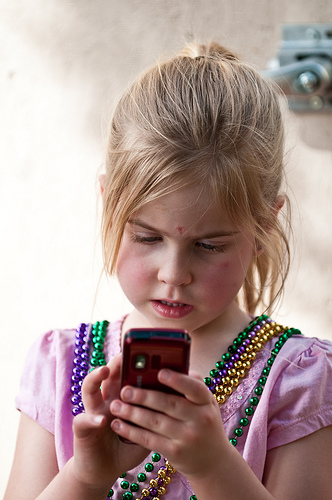Texting – a good or bad classroom experience?

800 teenagers and nine focus groups were studied at the end of 2009 by the Pew Research Center in Washington, D.C. The survey covered texting habits of teens at school and found that 54% were texting daily and that half the group sent 50 or more text messages a day.

Ariston Collander (Flickr)
The researchers wrote in their report that “their frequency of use of texting has now overtaken the frequency of every other common form of interaction with their friends.” A smaller number (38%) report talking on the phone every day, while only 33% talk face-to-face with friends daily.
AOL reports that texting is becoming part of the classroom experience nationwide. This includes schools that ban cell phones on campus. Students bring them anyway and some use them during class. A pilot program in one New York middle school issues limited-function cell phones that students can use in class. Some believe that texting in the classroom may promote learning and that teachers need to incorporate technology into their instruction.
A recent study from the United Kingdom’s National Literacy Trust found that students who text develop stronger core literacy skills than their peers. “It is a form of reading and writing. It might not be conventional but they are communicating,” an English official* stated.
In September, 2010, the PEW Internet and American Life Project reported that kids between 12 and 17 text an average of 50 times each day, while 72% of adults average 10 texts a day, up from previous years.
*John Coe, general secretary of the National Association for Primary Education (U.K.).



i think its not usable info